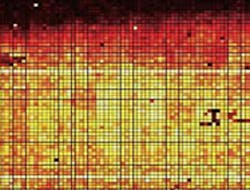New imager counts the photons
The adoption and widespread use of fluorescence lifetime imaging microscopy (FLIM) for biological research has been hindered by two major factors: the speed with which FLIM images can be acquired and the cost and complexity of the associated instrumentation.
To resolve these issues, researchers led by Professor Kenneth Shepard at Columbia University (New York, NY) aim to develop a novel two-dimensional high-frame-rate CMOS imager based on single-photon avalanche diodes (SPADs).
Today’s solid-state cameras are based primarily on two technologies -- charged-coupled device (CCD)and CMOS imagers. Both of these imaging technologies are based on converting photons to electrons and collecting these electrons to produce a measurable signal.
Instead of collecting electrons produced by photons, the new device will count them, one-by-one. Aside from offering a high sensitivity, the researchers say that the new device will also allow very short and dim optical events to be resolved, opening up the possibility of enabling many new types of biological imaging applications.
Fluorescent labels are used throughout biology to image processes both in vivo and in vitro. One of the properties of fluorescence is that it decays after the excitation source has been removed, with a characteristic decay time known as the 'lifetime.' By photon counting, researchers can measure this lifetime to provide further insight into the nature of biological processes.
Research into the development of the new device is expected to last until 2014.
More information is available here.
-- by Dave Wilson, Senior Editor, Vision Systems Design
